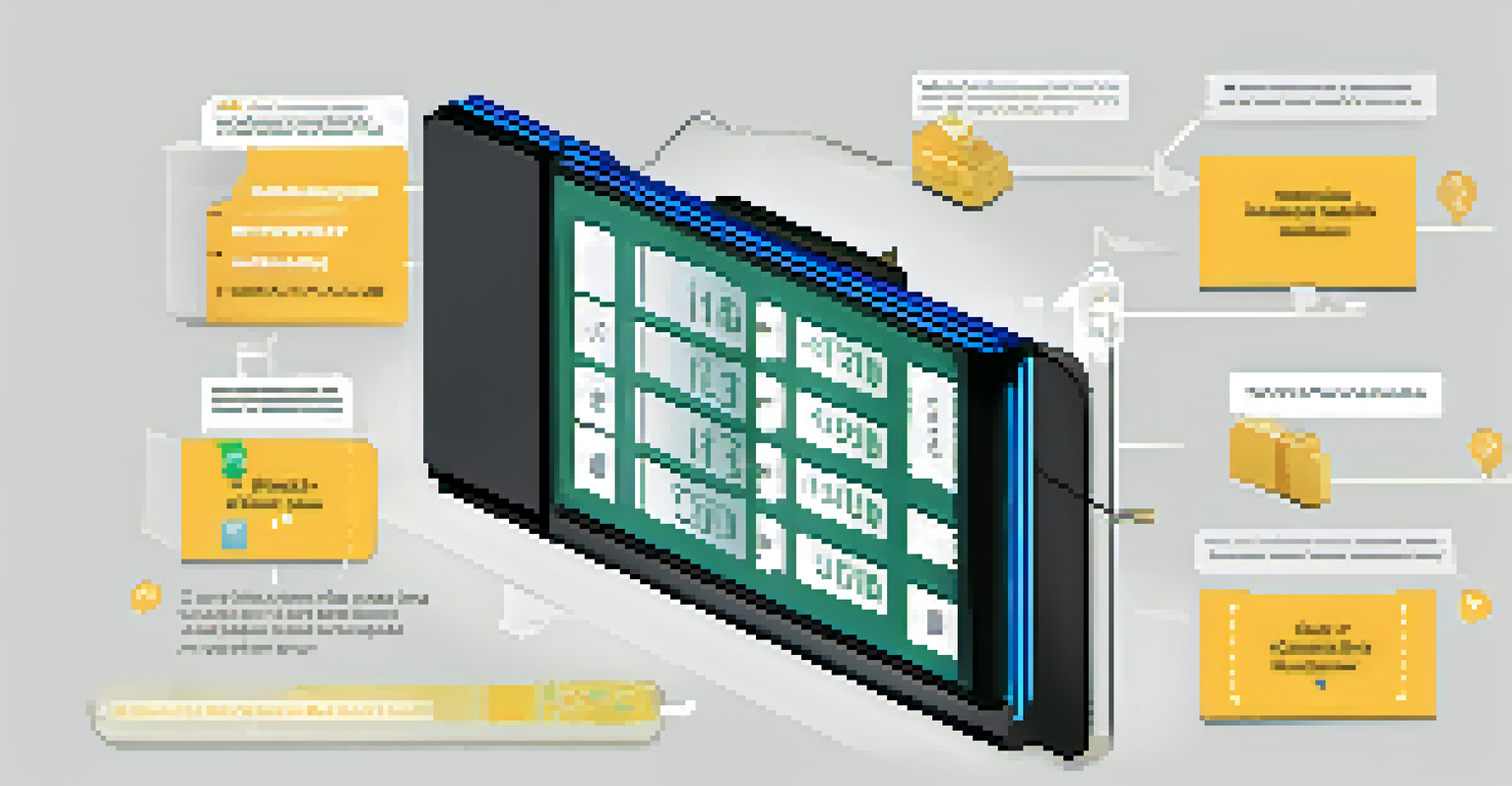Hardware Wallets: The Ultimate Security for Bitcoin Storage

What Are Hardware Wallets and How Do They Work?
Hardware wallets are physical devices designed to securely store your cryptocurrencies, especially Bitcoin. Unlike software wallets that are connected to the internet, hardware wallets keep your private keys offline, making it much harder for hackers to access your funds. These devices often resemble USB drives and come with specialized software to manage transactions safely.
Not your keys, not your coins.
When you want to send Bitcoin, the hardware wallet connects to your computer or smartphone, allowing you to sign transactions without exposing your private keys. This 'cold storage' method protects your assets from online threats such as malware or phishing attacks. Think of it like a safe for your digital money; even if your computer is compromised, your Bitcoin remains secure.
By using a hardware wallet, you can enjoy peace of mind knowing that your cryptocurrencies are stored in a dedicated, secure environment. It's an increasingly popular choice among serious investors who prioritize security over convenience, making it a fundamental part of responsible cryptocurrency management.
The Benefits of Using Hardware Wallets for Bitcoin
One of the main benefits of hardware wallets is their robust security features. They typically include a secure element that protects your private keys even in the event of physical theft. This means that even if someone were to steal your wallet, they would still need your PIN or recovery phrase to access your funds, adding an extra layer of security.

Another advantage is the user-friendly interfaces that many hardware wallets offer. While they are designed for security, manufacturers also prioritize simplicity, making it easy for anyone—from beginners to experienced users—to manage their Bitcoin. This combination of security and usability ensures that you can confidently store and transact with your Bitcoin.
Secure Your Crypto with Hardware Wallets
Hardware wallets keep your private keys offline, providing robust security against online threats.
Additionally, hardware wallets are compatible with multiple cryptocurrencies, which is a significant advantage for users who diversify their portfolios. This means you can manage different digital assets all in one place, making your experience streamlined and efficient.
Popular Hardware Wallets You Should Know About
Several hardware wallets have gained popularity in the cryptocurrency community. Two of the most well-known are Ledger and Trezor, each offering unique features and benefits to cater to different user needs. For instance, Ledger wallets often support a wide range of cryptocurrencies, while Trezor is praised for its ease of use and user-friendly design.
Security is not a product, but a process.
Another notable mention is the KeepKey wallet, known for its sleek design and integration with the ShapeShift platform. Each of these wallets employs high-level encryption and security protocols, ensuring that your Bitcoin remains safe from cyber threats. It’s essential to do your research and choose a wallet that aligns with your specific needs and preferences.
Ultimately, the right hardware wallet for you will depend on factors like the types of cryptocurrencies you own, your budget, and how often you plan to access your funds. By selecting a reputable hardware wallet, you can significantly enhance the security of your digital assets.
Setting Up Your Hardware Wallet: A Step-by-Step Guide
Setting up a hardware wallet may seem daunting, but it’s a straightforward process that can be tackled in a few simple steps. Start by unboxing your hardware wallet and following the manufacturer's instructions for connecting it to your computer or smartphone. Once connected, you'll need to create a secure PIN and write down your recovery phrase, which is essential for recovering your funds if the device is lost or damaged.
After setting up your PIN and recovery phrase, you'll want to install any necessary software on your device. This software will allow you to manage your Bitcoin and other cryptocurrencies securely. Remember, it's crucial to download the software from the official website to avoid any potential scams or malicious links.
User-Friendly and Versatile Options
Many hardware wallets are designed with intuitive interfaces, making them accessible for both beginners and experienced users.
Once everything is set up, you can start transferring your Bitcoin to your hardware wallet. This process usually involves generating a receiving address and using it to send Bitcoin from an exchange or software wallet. By following these steps, you’ll have your hardware wallet up and running, ready to securely store your Bitcoin.
Best Practices for Keeping Your Hardware Wallet Secure
While hardware wallets offer exceptional security, it's vital to adopt best practices to ensure your assets remain safe. One key practice is to keep your recovery phrase in a secure location, such as a safe or a locked drawer. This phrase is your lifeline to accessing your funds if something happens to your hardware wallet, so treat it like cash.
Additionally, always ensure that your hardware wallet's firmware is up to date. Manufacturers regularly release updates to patch vulnerabilities and enhance security features. By checking for updates periodically, you can ensure that your wallet remains protected against emerging security threats.
Lastly, avoid sharing sensitive information about your wallet or recovery phrase with anyone. Scammers often target cryptocurrency users through social engineering tactics. By being vigilant and adhering to these practices, you can significantly lower the risk of losing your Bitcoin to theft or fraud.
Common Misconceptions About Hardware Wallets
A common misconception about hardware wallets is that they are only for experienced users or investors with large amounts of Bitcoin. In reality, anyone who owns cryptocurrencies can benefit from using a hardware wallet, regardless of the amount. The added security it provides is essential for safeguarding even small investments in the volatile crypto market.
Another myth is that hardware wallets are infallible, meaning that they're completely immune to all threats. While they are significantly more secure than software wallets, they are not entirely risk-free. Users must still practice good security hygiene, such as safeguarding their recovery phrases and keeping their wallets updated, to minimize risks.
Best Practices Enhance Security
Regularly updating firmware and securely storing recovery phrases are essential practices for keeping your hardware wallet safe.
Many people also assume that using a hardware wallet is overly complicated, but most devices are designed with user experience in mind. With clear instructions and intuitive interfaces, even those new to cryptocurrency can quickly learn how to use a hardware wallet effectively.
Final Thoughts: Is a Hardware Wallet Right for You?
Deciding whether a hardware wallet is right for you largely depends on your individual cryptocurrency needs and how you plan to use your assets. If you’re a casual user who occasionally buys Bitcoin, a software wallet might suffice. However, if you hold significant amounts or plan to invest for the long term, a hardware wallet is a wise investment.
Consider your security priorities, transaction habits, and overall cryptocurrency strategy. A hardware wallet offers peace of mind, knowing that your assets are protected from online threats. While they come at a cost, the security benefits they provide often outweigh the price for serious investors.

Ultimately, the choice is yours. Assess your situation, weigh the pros and cons, and choose the storage method that aligns with your financial goals. Remember, the world of cryptocurrency is constantly evolving, and staying informed is key to protecting your investments.